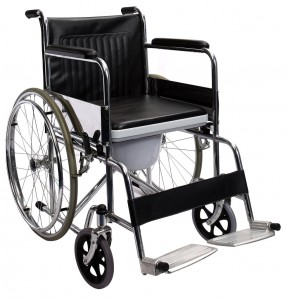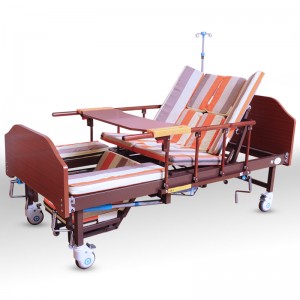AMS (Automated Manifest System, American Manifest System, Advanced Manifest System) is known as the United States manifest entry system, also known as 24-hour manifest forecast or United States Customs anti-terrorism manifest.
According to the regulations issued by the United States Customs, all goods exported to the United States or transited through the United States to a third country must be declared to the United States Customs 24 hours before shipment. Request the forwarder closest to the direct exporter to send AMS information. AMS information is directly sent to the database of the US Customs through the system designated by the US Customs. The US Customs system will automatically check and reply. When sending AMS information, the detailed information of the goods should be submitted to the past, including the number of gross weight pieces at the port of destination, the name of the goods, the case number of the shippers, the real consignee and consignor (not the FORWARDER) and the corresponding code number. Only after the American side accepts it can the ship be boarded. If there is HB/L, both copies should be sent to…… . Otherwise, the cargo will not be allowed on board.
The origin of AMS: After the September 11, 2002 terrorist attacks, the United States Customs and Homeland Security registered this new customs rule on October 31, 2002, and it became effective on December 2, 2002, with a 60-day buffer period (no liability for non-fraudulent violations during the buffer period).
Who should send AMS data? According to the regulations of the US Customs, the forwarder closest to the direct exporter (NVOCC) is required to send AMS information. NOVCC sending AMS first needs to obtain NVOCC qualification from US FMC. At the same time, it is necessary to apply for the exclusive SCAC (Standard Carrier Alpha Code) from the National Motor Freight Traffic Association (NMFTA) in the United States to send relevant data to the United States Customs. In the process of sending, NVOCC must have a complete and clear understanding of the relevant regulations of the United States Customs, and strictly follow the relevant rules, which may lead to customs clearance delays or even fines by the United States Customs.
How many days in advance should AMS materials be sent? Because AMS is also called 24-hour manifest forecast, as the name implies, the manifest should be sent 24 hours in advance. 24 hours is not based on the departure time, but should be required to get the return receipt of the US Customs 24 hours before the box is loaded on the ship (the freight forwarder gets OK/1Y, the shipping company or the dock gets 69). There is no specific time for sending in advance, and the sooner it is sent, the sooner it is sent. It’s no use not getting the correct receipt.
In practice, the shipping company or NVOCC will request AMS information to be submitted very early (the shipping company usually intercepts the order three or four days in advance), while the exporter may not provide the information three or four days in advance, so there are cases that the shipping company and NOVCC will be asked to change AMS information after the intercepts. What is required in the AMS profile?
A complete AMS includes House BL Number, Carrier Master BL No, Carrier Name, Shipper, Consignee, Notify Party, Place of Receipt and Vessel / Voyage, Port of Loading, Port of Discharge, Destination, Container Number, Seal Number, Size/ Type, No.&PKG Type, Weight, CBM, Description of Goods, Marks & Numbers, all these information are based on the contents of the bill of lading provided by the exporter.
Real importer and exporter information can not be given?
Not according to U.S. Customs. In addition, the customs checks the information of CNEE very strictly. If there is a problem with CNEE, USD1000-5000 should be prepared first. Shipping companies often ask NVOCC to put the phone, fax or even contact person of the importer and exporter into the AMS information to provide, although the regulations of the US Customs do not need to provide the phone, fax or contact person, only need the company name, correct address and ZIP CODE, etc. However, the detailed information requested by the shipping company helps US Customs to contact CNEE directly and request the required information. What will be the result of AMS data sent to the United States? AMS information is directly sent to the customs database by using the system designated by the US Customs, and the US Customs system automatically checks and replies. Generally, the result will be obtained 5-10 minutes after sending. As long as the AMS information sent is complete, the result of “OK” will be obtained immediately. This “OK” means that there is no problem for the shipment of AMS to board the ship. If there is no “OK”, the ship cannot be boarded. On December 6, 2003, the US Customs began to require SPECIAL BILL, that is, to match the MASTER BILL issued by the shipping company with the MASTER BILL NO in AMS. If the two numbers are consistent, the result of “1Y” will be obtained, and AMS will have no problem in customs clearance. This “1Y” only needs to be obtained before the ship makes port in the United States.
The significance of AMS since the implementation of AMS24 hours declaration, combined with the subsequent launch of the supporting security provisions and ISF. It makes the goods information imported from the United States accurate and clean, complete data, easy to track and query. It not only improves homeland security, but also greatly reduces the risk of imported goods and improves the efficiency of customs clearance.
Us Customs may update AMS requirements and procedures from time to time, and please refer to the latest US Customs release for details.
Post time: Sep-05-2023



